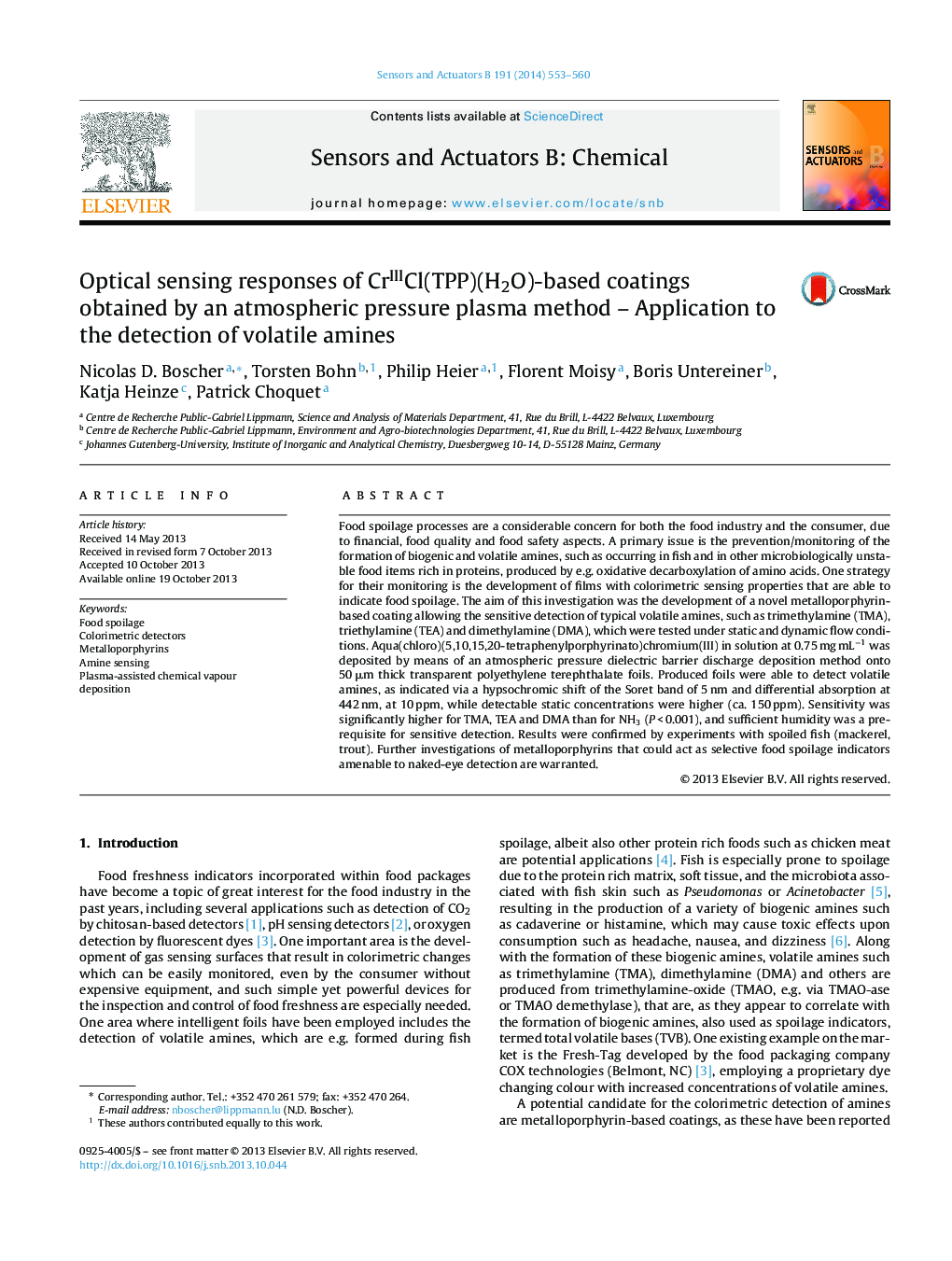| Article ID | Journal | Published Year | Pages | File Type |
|---|---|---|---|---|
| 7147792 | Sensors and Actuators B: Chemical | 2014 | 8 Pages |
Abstract
Food spoilage processes are a considerable concern for both the food industry and the consumer, due to financial, food quality and food safety aspects. A primary issue is the prevention/monitoring of the formation of biogenic and volatile amines, such as occurring in fish and in other microbiologically unstable food items rich in proteins, produced by e.g. oxidative decarboxylation of amino acids. One strategy for their monitoring is the development of films with colorimetric sensing properties that are able to indicate food spoilage. The aim of this investigation was the development of a novel metalloporphyrin-based coating allowing the sensitive detection of typical volatile amines, such as trimethylamine (TMA), triethylamine (TEA) and dimethylamine (DMA), which were tested under static and dynamic flow conditions. Aqua(chloro)(5,10,15,20-tetraphenylporphyrinato)chromium(III) in solution at 0.75 mg mLâ1 was deposited by means of an atmospheric pressure dielectric barrier discharge deposition method onto 50 μm thick transparent polyethylene terephthalate foils. Produced foils were able to detect volatile amines, as indicated via a hypsochromic shift of the Soret band of 5 nm and differential absorption at 442 nm, at 10 ppm, while detectable static concentrations were higher (ca. 150 ppm). Sensitivity was significantly higher for TMA, TEA and DMA than for NH3 (P < 0.001), and sufficient humidity was a prerequisite for sensitive detection. Results were confirmed by experiments with spoiled fish (mackerel, trout). Further investigations of metalloporphyrins that could act as selective food spoilage indicators amenable to naked-eye detection are warranted.
Related Topics
Physical Sciences and Engineering
Chemistry
Analytical Chemistry
Authors
Nicolas D. Boscher, Torsten Bohn, Philip Heier, Florent Moisy, Boris Untereiner, Katja Heinze, Patrick Choquet,
